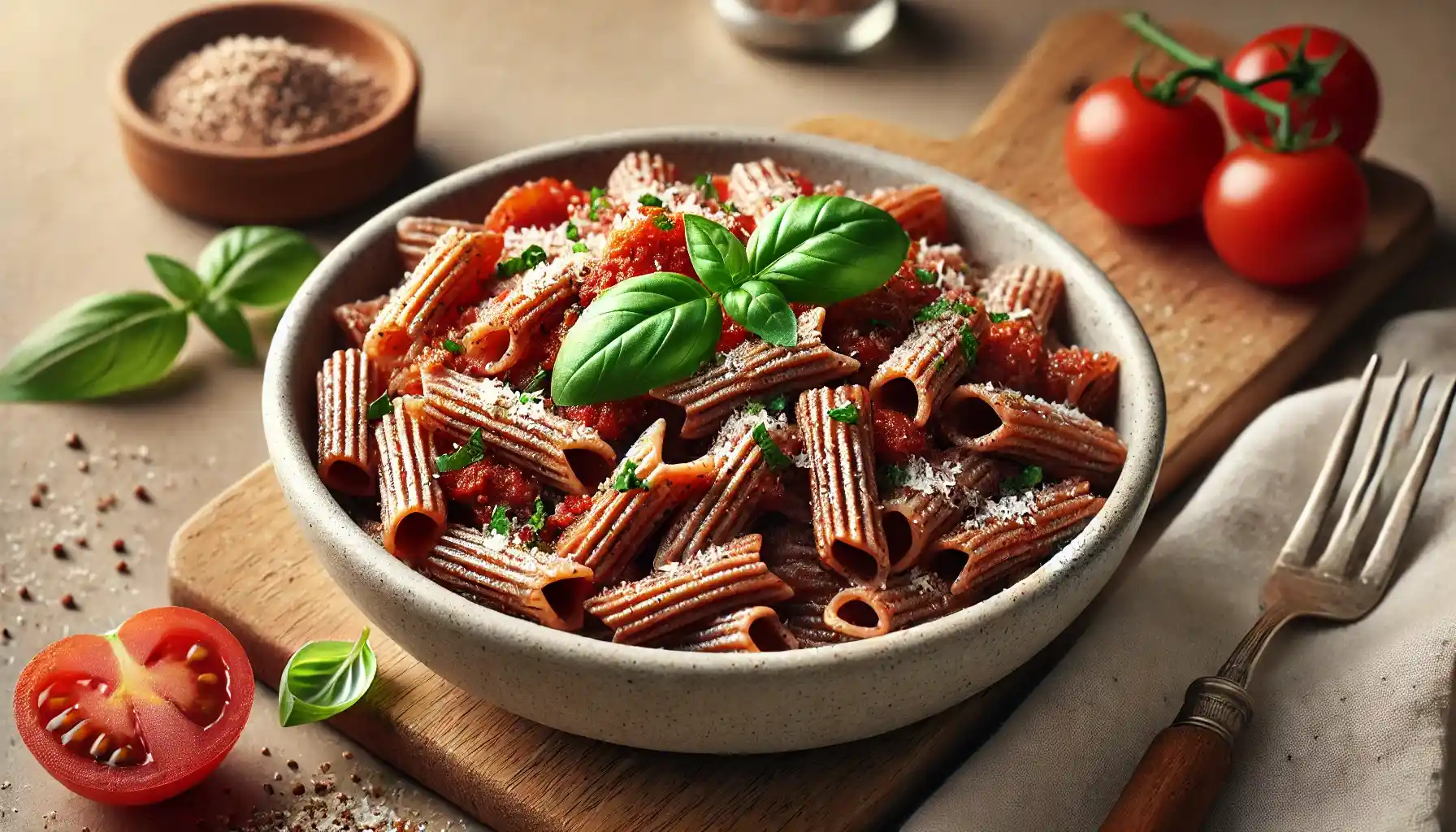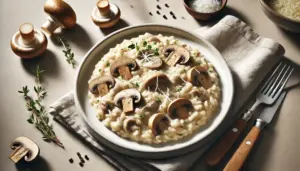Ragi Pasta Recipe Pasta is a go-to comfort food for many, but what if we could make it not just delicious but also healthier? That’s where Ragi Pasta comes in! Ragi, also known as finger millet, is a nutrient-rich grain that’s packed with fiber, calcium, and iron. Incorporating ragi into pasta is a fantastic way to enjoy the goodness of traditional pasta with added health benefits. This Ragi Pasta Recipe is perfect for those looking to switch up their regular pasta with a nutritious alternative.
In this article, we will explore how to make ragi pasta from scratch, discuss the benefits of using ragi flour, and share tips to help you create a delicious dish that everyone will love.
Why Ragi?
Ragi (finger millet) is an ancient grain that has been used in Indian cuisine for centuries. It’s known for its high nutrient content and is particularly rich in calcium, iron, dietary fiber, and amino acids. Adding ragi flour to your diet can help improve digestion, strengthen bones, and keep you feeling full for longer periods.
Using ragi to make pasta offers a unique nutty flavor and a hearty texture that pairs well with a variety of sauces and vegetables. Plus, it’s gluten-free, making it a great choice for those with gluten sensitivities.
Ingredients Needed for Ragi Pasta
Before we get into the step-by-step guide, let’s look at the ingredients you’ll need for the Ragi Pasta Dough and the sauce:
For the Pasta Dough:
- Ragi Flour: 1 cup (125g)
- All-Purpose Flour (or Whole Wheat Flour): ½ cup (60g) for binding
- Olive Oil: 1 tablespoon
- Salt: ½ teaspoon
- Warm Water: As needed to knead the dough
For the Pasta Sauce (Tomato Basil Sauce):
- Olive Oil: 2 tablespoons
- Garlic Cloves: 3, minced
- Onion: 1 small, finely chopped
- Tomatoes: 3 large, pureed
- Tomato Paste: 2 tablespoons (optional for richer flavor)
- Fresh Basil Leaves: A handful, chopped
- Salt and Pepper: To taste
- Parmesan Cheese: For garnish (optional)
Step-by-Step Guide to Making Ragi Pasta
- Prepare the Ragi Pasta Dough
- In a large mixing bowl, combine ragi flour, all-purpose flour, and salt. Slowly add warm water, a little at a time, while mixing with your hands until a rough dough forms. Add olive oil and knead the dough for about 5-7 minutes until it becomes smooth and firm. Tip: Ragi flour doesn’t have the same elasticity as wheat flour, so kneading may require patience. Use a little more all-purpose flour if the dough feels too dry or crumbly.
- Rest the Dough
- Cover the dough with a clean cloth and let it rest for 20 minutes. This helps the flour absorb water fully and makes it easier to roll out.
- Roll and Cut the Pasta
- Once rested, divide the dough into smaller portions. Take one portion at a time and roll it out on a floured surface to a thin sheet. Use a knife or a pasta cutter to cut the dough into strips for fettuccine or shapes like penne or fusilli if you have a pasta mold. Tip: Dust the rolled dough with flour to prevent sticking and ensure even thickness.
- Cook the Pasta
- Bring a pot of salted water to a boil. Add the freshly cut ragi pasta and cook for 4-5 minutes until it floats to the surface. Ragi pasta cooks faster than traditional pasta, so keep an eye on it to avoid overcooking.
- Once cooked, drain the pasta and set it aside.
- Prepare the Tomato Basil Sauce
- In a pan, heat olive oil over medium heat. Add minced garlic and sauté until fragrant. Add chopped onions and cook until they turn translucent.
- Pour in the pureed tomatoes and tomato paste, if using. Simmer the sauce for 10-15 minutes until it thickens slightly.
- Season with salt, pepper, and chopped basil leaves. Simmer for another 2 minutes and remove from heat.
- Combine the Pasta and Sauce
- Add the cooked ragi pasta to the sauce and toss gently to coat each piece evenly. If the sauce is too thick, you can add a splash of the pasta cooking water to loosen it up.
- Serve with Garnish
- Serve the ragi pasta hot, garnished with freshly grated parmesan cheese and a few more basil leaves for a fresh touch.
Nutritional Benefits of Ragi Pasta
Ragi pasta is not just delicious, but it’s also packed with health benefits:
- Rich in Calcium: Ragi is one of the best plant-based sources of calcium, promoting bone health.
- High in Fiber: It aids digestion and helps maintain healthy blood sugar levels.
- Good Source of Iron: Ragi is an excellent option for those with iron deficiencies.
- Low Glycemic Index: Ragi helps in controlling blood sugar levels, making it suitable for diabetics.
Tips to Perfect Your Ragi Pasta
Making pasta with ragi flour is slightly different from regular pasta, and a few key tips can help you achieve the best results:
- Use a Combination of Flours: Ragi lacks the elasticity of gluten-rich flours. Mixing it with a bit of all-purpose or whole wheat flour will help bind the dough better.
- Rest the Dough: Allowing the dough to rest after kneading ensures that the flour absorbs the water fully, making the dough easier to handle.
- Cook Carefully: Ragi pasta cooks faster than traditional pasta, so keep an eye on it to avoid a mushy texture.
- Add Herbs to the Dough: If you prefer, add a pinch of dried oregano or chili flakes to the dough for a flavorful twist.
Storage Tips for Ragi Pasta
If you want to prepare the pasta dough in advance, it’s easy to store it for later use:
- Refrigerating: After kneading, wrap the dough tightly in plastic wrap and store it in the refrigerator for up to 3 days. Bring it to room temperature before rolling and cutting.
- Freezing: Roll and cut the dough into pasta shapes, then lay them on a floured baking sheet and freeze for an hour. Transfer the frozen pasta to an airtight container, and it can be stored for up to 3 months. Cook directly from frozen in boiling water.
Final Thoughts
Ragi pasta is a nutritious and delicious alternative to traditional pasta, offering a unique flavor profile and impressive health benefits. By following this comprehensive guide, you can create a hearty and satisfying pasta dish that is perfect for lunch or dinner. Plus, it’s an excellent way to introduce more whole grains into your diet without compromising on taste.
So the next time you’re looking to try something new, give this Ragi Pasta Recipe a go! You’ll love the rich, earthy flavor and the knowledge that you’re eating something good for you.




